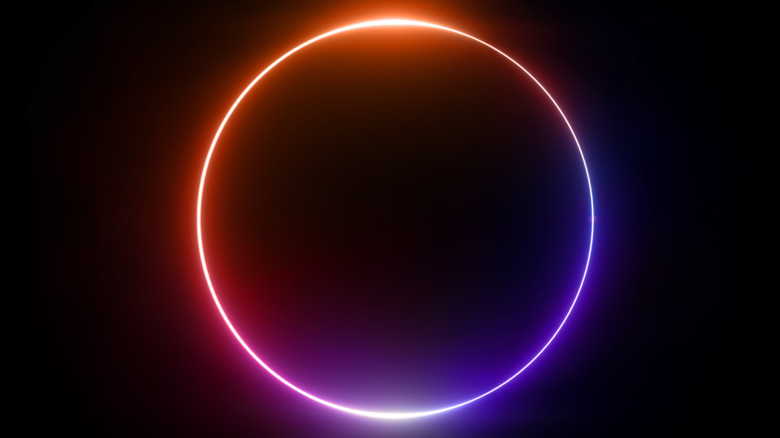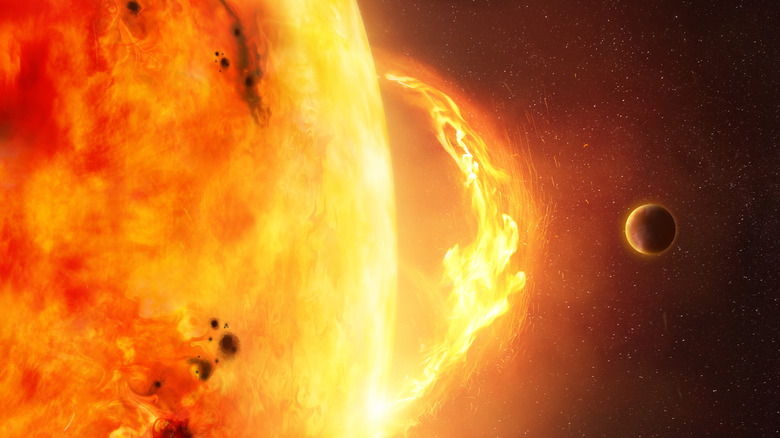How Scientists Discovered Auroras On A Planet 70 Trillion Miles Away
The search for extraterrestrial life — both within and beyond our solar system — revolves around liquid water. That's not without reason. Life wouldn't be possible on Earth without water, and scientists expect that to be the case elsewhere in the universe. But life, especially if it's anything remotely similar to human life, needs more, including a narrow range of temperatures, protection from the radiation of its host star, and a way to breath. All of those things can be provided by a planetary atmosphere.
In most solar systems, the dominating force is the star (or stars) at the center. To that point, 99.8% of the total mass of our solar system is locked up in the sun, which, like all stars, is in the fusion business. This emits unfathomable amounts of solar radiation in the form of particles and energy called the solar wind, or on a bad day, solar storms. Any nearby planetary bodies are in its path are susceptible to that radiation.
Lucky for us, Earth has a powerful magnetic field. This protects our atmosphere from the sun's relentless pummeling, and maintains temperature control, radiation shielding, and breathable oxygen that we need to survive. And now, scientists have for the first time discovered a magnetic field surrounding another rocky planet outside of our solar system.
Detecting the aurora exterius
In a study published this week in the journal Nature Astronomy, scientists described how they used the National Science Foundation's Karl G. Jansky Very Large Array radio telescope to observe a star called YZ Ceti. It's located about 12 lightyears from Earth and is classified as a red dwarf. This type of star is dimmer, cooler, and smaller than our own, but the havoc it could cause to a planet's atmosphere is no less severe.
Its known exoplanet called YZ Ceti is a rocky planet about 70% the size of Earth, but it orbits its star much, much closer, completing a revolution every two days. While scientists were analyzing the radio waves coming from this star, they picked up occasional brighter bursts, and one likely explanation is that the planet has a strong magnetic field.
A planetary magnetic field like this could help an exoplanet to retain an atmosphere, like Earth's. On planet, scientists observed interactions between the magnetic field and the sun's radiation in the form of auroras — the aurora borealis in the northern hemisphere and the aurora australis in the southern hemisphere. And if YZ Ceti has its atmosphere, then these magnetic interactions would result in a similar phenomenon on that planet. While this is a first-of-its-kind observation, scientists are hopeful to refine the technique and point telescopes at other stars and planets in the future.

